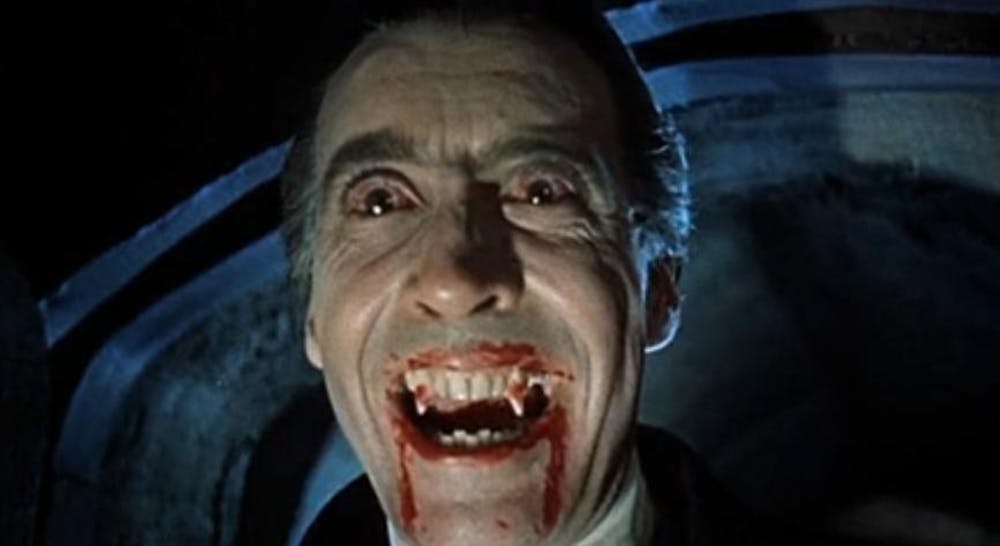It Follows
It Follows, an American film released at the end of March, tells the story of a young college student named Jay at home for the summer. After a confusing sexual experience with a guy, she's instilled with the curse of It—a force that can manifest itself in any person and follows Jay around. It comes for you, but others can't see It. If It reaches you, It kills you. The only way to get rid of It is by passing It onto others through sexual contact.
The most ambitious part of the film is the way it tackles sexual assault, especially in the context of a college–aged female. However, the film doesn't exploit this theme as slasher films did in the '70s and '80s, where teenagers would be chopped up on screen as a punishment for being sexually active. Rather, the film shows a more nuanced view of the issue, portraying the process of a girl mentally overcoming a traumatic sexual experience with the help of her friends.

It Follows has a clear message: sexual conduct, whether consensual or forced, follows you, mentally and emotionally. Those feelings can't be shoved aside or ignored.
At the same time, the film is very open–ended. The narrative is loose, the end is somewhat unresolved, and the machinations of It are unclear.
These stylistic choices seem intentional, reflecting the way issues like this are never clear–cut in real life.
The camera mimics this ambiguity using open and wide shots. The perspective gives the viewer the sensation of watching or being watched. These voyeuristic shots create an ongoing sense of uneasiness for the audience, who can constantly see It in the background of every frame. Since the ‘monsters’ in this film are relatively normal–looking people, the horror relies on tension–building music to produce its scares. The constant high-pitched synth pervades the movie and is interjected by a heart–pounding bass.
Babadook
Babadook, an Australian film released in 2014, tells the story of Amelia, a stressed and isolated single mother, concerned with the mental health and stability of her erratic son, Samuel. Meanwhile she battles her own grief over the loss of her husband. It soon becomes apparent that these two issues are very closely intertwined, and the invisible ‘boogie man’ that her son is obsessed with catching and killing is actually deep–seated grief and resentment brooding in the mother herself.
The camera’s striking cinematography is the first layer of fright in the film. The camera is framed in extremely tight shots, giving an ongoing sense of claustrophobia, contributing to the themes of the narrative. Even when the shot is outside of the house—the car, a playground, a friend’s house—the audience cannot help but feel trapped, whether in the constraints of the camera frame or the mind of our mentally unstable protagonist.

Most importantly, there are hardly any cheap jumps. Instead, the horror comes from tiny, idiosyncratic moments that build tension. One chill–inducing shot goes under the bed sheets as a light passes over Amelia’s head. The shot looks supernatural, but it's only the sun moving through the sky as time passes.
But the truly scary part is how the events, relationships and circumstances are so realistic. It’s hard to see the movie as a horror story and not an introspective and insidious look at the realities of grief, loss and parenting. And that's because it does a bit of both.
WHAT THE FILMS MEAN FOR HORROR:
The most commendable part about these movies is the way they conquer socially relevant and realistic issues while using the semiotic elements of the horror genre. While Babadook portrays dealing with grief and loss of a spouse, It Follows tackles teenage sexuality (with references to sexual assault, child abuse and incest). Nowadays, we see horror movies being made just for the sake of trying to be scary. Babadook and It Follows, however, seem to have taken controversial issues and inner conflicts and dramatized them accurately through the generic conventions of a standard horror film. In The Babadook, the classic tropes of horror movies—a monster, black vomit, a creepy child in a tree house, a demonic boy— are all artistic representations a woman’s struggle with grief. In It Follows we see scintillating commentary on a girl’s struggle with sexual assault, including the authorities that are always one step behind, and quotes like ‘I can’t tell my mother. She’ll blame me.’
In the end, both are terrific films, dealing with subversive and ambitious material while delivering thought–provoking and thrilling entertainment. And both are paving the way for a new style of artistic and socially relevant horror cinema.
Photos: YouTube (It Follows) and Wordpress (Babadook)

